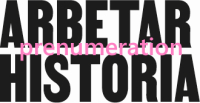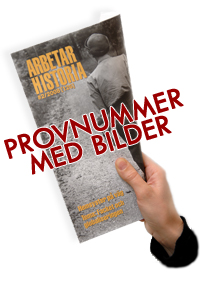Abstracts for issue no 132
Steering and acting on one’s own: The social democratic youth organisation Unga Örnar 1929-45 / Norbert Götz
This article sketches the development and the main ideas of the Swedish social democratic youth organisation Unga Örnar (Young Eagles), mainly designed for the age group 12-15 years, from the foundation of this organisation in 1929 until 1945. The principle tension in the work of the Unga Örnar was that between the tradition of the burgeois scout movement on the one hand and the tradition of the labour movements’ educational endeavours and study circles on the other hand. The Unga Örnar attempted to combine these traditions within a pragmatic framework of self-rule of the adolescents. Ultimately, the article shows that social democratic youth work was about the communication of universalistic norms and values in the interest of their clientele and not about the implantation of narrow class-based interests.
Care and hard work - children’s work and education within equestrian sports / Susanna Hedenborg
The purpose of this article is to analyze the educational strivings in theory and practice within equestrian sports in Sweden during the second half of the 20th century. Theoretical education is studied in connection to the work of one of the equestrian organizations: Ridfrämjandet. The organization was formed in 1948 and shortly after its establishment it is clear that it attracted especially young people and children. Ridfrämjandet, as many other sports associations, achieved governmental subsidies for their youth activities and a large amount of their work was devoted to courses. Previous research has used two concepts to characterize the educational strivings within the sports associations: rearing for competition and rearing for citizenship. Furthermore it has been demonstrated that the rearing within sports has to a large extent been characterized by rearing for competition. In difference from this, the courses within Ridfrämjandet were concentrated on a rearing for citizenship and - rearing for care taking. Rearing for care is also very emphasized within equestrian practice - much more than horse riding per se. It is possible that the care taking characteristics within the equestrian organization can be connected to the process of feminization. However, interpretations are complex as equestrian education has since long been characterized by care - also at a time when horse were taken care of by men.
Police surveillance of Labor Movement meetings in Stockholm, 1885-1918 / Jenny Langkjaer
At the turn of the last century, the Swedish government perceived the Labor Movement as a threat to society. Many laws were passed to diminish this threat. It was left to the police to uphold these laws, and in 1885 the local Stockholm Criminal Investigation Department started to observe political meetings, mainly organized by social democrats. Between 1885 and 1918 at least 1 921 meetings were put under surveillance. However, very few people were convicted for crimes in connection to these meetings.
The problem for the police was that there wasn’t much to do about the Labor Movement, as it mostly kept itself within the juridical frames that were put up by the government. The surveillance, which at first had been an attempt to suppress the socialistic agitation by gathering evidence to enable prosecution, soon turned into routine work. Police reports were written the same way year after year, attempts to change what was reported failed, and unessential details were cited endlessly. Once the surveillance had started, it developed on its own terms, and became a bureaucratic apparatus.


